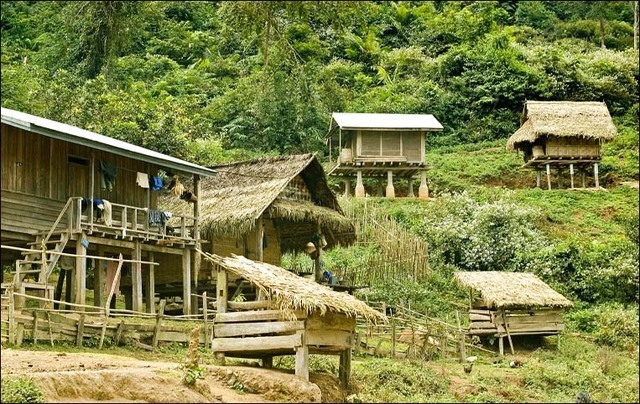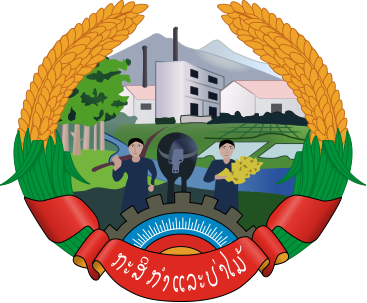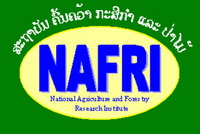Lao PDR's Second National Communication
Project Overview
The creation of a National Communication offers countries the opportunity to contribute with technically sound studies and information that can be used for designing mitigation and adaptation measures, and project proposals that can and will help increase their resilience to the impacts of climate change. Activities generally include: V&A assessments, GHG inventory preparation, mitigation analysis or education, and awareness-raising activities. The ultimate goal is the integration of climate change considerations into relevant social, economic and environmental policies and actions.
Lao PDR faces significant threats from climate change, in part because 75 per cent of its population depends on natural resources for their livelihood. The government has expressed concern regarding the impacts of climate change on flooding and rainfall patterns, which are said to be increasing and becoming erratic.
Floods and droughts historically have significantly impacted Lao PDR’s agriculture, forestry, water resources, health and economic growth. As such, these sectors have also been identified as priority areas for adaptation. Additional concerns are: a lack of capacity and knowledge with respect to climate modeling; a lack of scientific data on climate effects and potential impacts; low levels of public awareness; and a weak institutional setup that acts as a barrier to adaptation. Financial and capacity constraints are highlighted as major barriers to climate change action.
Project Details
Lao People's Democratic Republic is located in the Indochina Peninsular (Mekong Region), bordered by China to the North, Vietnam to the East, Cambodia to the South, and Thailand and Myanmar (Burma) to the West and Northwest respectively with population of just over 6.4 million (CIA, 2011). Lao PDR had a ranking of 122 of 169 on the human development index in 2010 (UNDP, 2010), putting it near the bottom of the list of countries that have achieved a medium level of human development. The country’s per capital annual income in 2010 was approximately US$986 (USDS, 2010). The country’s economy is highly dependent on agriculture, representing 30 per cent of GDP and employing approximately 75 per cent of the country’s population.
The country’s climate is tropical and monsoonal, characterized by a rainy season from May to November and a dry season from November to April (USDS, 2010). In order to adapt to climate change a few projects based on assessed priority levels are in place including the project to strengthen the capacity if the national disaster management committees and the project to strengthen capacity of village forestry volunteers in forest planting, caring and management techniques as well as the use of village forests. Lao People's Democratic Republic has a total land area of approximately 236,800 km², 80 percent of which is mountainous. Mountains are found in the Northern region, the Annamite Chain (forming most of the eastern border of the country), and in the South, posing a significant natural buffer to storms that occur in the region. However, the remaining 20 percent of the country comprises mostly flat floodplains along the Mekong River. The lowest altitude of Lao People's Democratic Republic is 200 meters and highest is 2,880 meters. Lao People's Democratic Republic has a tropical climate, which is influenced by the southeast monsoon which causes significant rainfall and high humidity. The climate is divided into two distinct seasons: rainy season, or monsoon, from May to mid-October, followed by a dry season from mid-October to April. The average annual rainfall is about 1,300 – 3,000 mm. Average temperatures in the northern and eastern mountainous areas and the plateaus are 20°C , and in the plains 25-27°C.
Adaptation Needs and Priorities:
Lao PDR faces significant threats from climate change, in part because 75 per cent of its population depends on natural resources for their livelihood. The government has expressed concern regarding the impacts of climate change on flooding and rainfall patterns, which are said to be increasing and becoming erratic. Floods and droughts historically have significantly impacted Lao PDR’s agriculture, forestry, water resources, health and economic growth. As such, these sectors have also been identified as priority areas for adaptation (Sengchandala, 2010). Additional concerns are: a lack of capacity and knowledge with respect to climate modeling; a lack of scientific data on climate effects and potential impacts; low levels of public awareness; and a weak institutional setup that acts as a barrier to adaptation. Financial and capacity constraints are highlighted as major barriers to climate change action (DoE, 2000).
Knowledge of climate change issues has progressed over the past decade, but the barriers to implementation still largely remain. Capacity building at all levels of government would greatly support improved awareness and help generate accurate information and data on climate change and appropriate adaptation strategies in the country.
National Level Action:
Lao PDR submitted its First National Communication to the United Nations Framework Convention on Climate Change (UNFCCC) in November 2000. This document identifies raising awareness as one of the initial areas of focus for the country; the actual term “adaptation” only appears twice in the entire document, and is primarily referenced in relation to the need for a vulnerability and impact assessment of climate change risk. Subsequently, in 2008, Lao PDR established a National Steering Committee on Climate Change and a National Climate Change Office (Sengchandala, 2010). It also prepared a National Adaptation Programme of Action (NAPA) that was submitted to the UNFCCC in May 2009. It is currently developing its Second National Communication with the support of the United Nations Development Programme (UNDP).
In March 2010, Lao PDR approved a National Strategy on Climate Change (NSCC). This framework document identifies seven priority areas for adaptation and mitigation: agriculture and food security; forestry and land use change; water resources; energy and transport; industry; urban development; and public health (Sengchandala, 2010). The NAPA forms a central component of the NSCC. An overarching goal of the NSCC was to ensure that climate change was streamlined into Lao’s Seventh National Socio-Economic Development Plan (2011-2015). The NAPA, NSCC and current Development Plan have greatly strengthened the policy framework for climate change work in Lao PDR and have served to build awareness of the issue at least among senior government officials in the country. Despite this progress, a weak institutional setup is still seen as significant barriers to adaptation. In particular, a lack of coordination between the UNFCCC National Focal Point, the Water Resource and Environment Administration and other line Ministries limits integration of climate change adaptation policies into sector strategies.
Current Adaptation Action:
Lao PDR is benefitting from a number of adaptation projects, with a smaller number of national projects compared to multi-country projects underway in the country. Its level of activity, though, is low compared to other East and Southeast Asian developing countries. National projects are primarily focused on water, agriculture and disaster risk management, and are funded by the Asian Development Bank (ADB), the Global Environment Facility (GEF), Least Developed Countries Fund (LDCF), Nordic Development Fund and UNDP. Regional projects active in Lao PDR also are primarily focused on addressing adaptation concerns in the water and agriculture sectors, but also address disaster risk management and the provision of climate information services. These regionally focused projects are funded by the governments of Australia, Denmark, Germany, Sweden and the United States.
Assessment:
While climate change is characterized as a high priority in Lao PDR, it appears that capacity is lacking for effective implementation. This observation is reflected in the fact that the country’s highest adaptation priority is simply education and capacity building. Strides have been made in improving this capacity through the development of a NAPA and NSCC, supported by the LDCF.
Ongoing adaptation initiatives within the country are addressing many of the adaptation priorities identified by the country. There is a considerable amount of work occurring with the water and agriculture sectors, at both the regional and national level, as well as within the area of policy formulation and risk reduction. Gaps in Lao PDR’s climate change activities include a dearth of initiatives within the forestry sector, which has been identified as a top adaptation priority for the country. Forestry initiative may exist within the country under the banner of mitigation projects, and it is possible that these projects would entail adaptation co-benefits. Additional gaps in current programming include energy and transport, urban areas, public health and gender. In addition, it appears that the country has a lack of climate change expertise or accurate data. Going forward, Lao PDR could greatly benefit from the sharing and internal development of scientific and technical capacity for climate change generally and adaptation specifically.
References:
- Gass, Philip; Hove, Hilary; Parry, Jo-Ellen. (2011) “Review of Current and Planned Adaptation Action: East and Southeast Asia.” Adaptation Partnership / International Institute for Sustainable Development.
- Central Intelligence Agency [CIA] (2011). Laos. The World Factbook. Retrieved from https://www.cia.gov/library/publications/the-world-factbook/geos/la.html
- Department of Environment (2000). Lao People Democratic Republic: The First National Communication on Climate Change. Retrieved fromhttp://unfccc.int/resource/docs/natc/laonc1.pdf
- National Environment Committee (2009). National Adaptation Programme of Action to Climate Change. Retrieved fromhttp://unfccc.int/resource/docs/napa/laos01.pdf
- Sengchandala, S. (2010). Climate Change Policy of Lao PDR. Presentation to the 8th Workshop on GHG Inventories in Asia, Lao Plaza, 13-16 July 2010. Retrieved from http://www-gio.nies.go.jp/wgia/wg8/pdf/0-3_syamphone_segchandala.pdf
- United Nations Development Program (UNDP). 2010. Human Development Index 2010. Retrieved from http://hdr.undp.org/en/statistics/
Key Results and Outputs
- Sustainable development and the integration of climate change concerns into medium- and long-term planning
- Inventories of anthropogenic emissions by sources and removals by sinks of greenhouse gases
- Measures contributing to addressing climate change
- Research and systematic observation
- Climate change impacts, adaptation measures and response strategies
- Education, training and public awareness
The government’s main goals for climate change activities in the future are:
- increase public awareness activities on climate change
- implement a GHG mitigation plan
- regularly monitor and control climate change activities, for example data collection on temperature, rainfall, water flow, etc; and
- cooperate with international agencies on climate change activities and related issues
Climate change is a new concept in the Lao PDR. The understanding of this subject–the science, mitigation aspects, impacts and adaptations, and its relevance to Lao PDR’s economy – are mainly restricted to a few institutions and individuals. The Lao National GHG Inventory Project is the first exposure of policy makers and technical persons to the climate change issues. Though this project has built limited capacity, a much wider dissemination of this issue and capacity building would be required before the country is in a position to have a stated or fully considered national perspective on policies and measures to respond to climate change.
However, climate change activities in the Lao PDR have been growing since its participation at the Rio Earth Summit in 1992. Since then, interactions with IPCC and participation at COP (conference of the parties), including the above-mentioned project, have encouraged limited national consultations and activities relevant to the UN FCCC. These consultations and activities, while not constituting stated government policy, give indications of national thought on issues relating to climate change. Lao PDR is signatory to the FCCC, and ratified the Convention on 5 January 1995.
Monitoring and Evaluation
In 1992, countries joined an international treaty, the United Nations Framework Convention on Climate Change, to cooperatively consider what they could do to limit average global temperature increases and the resulting climate change, and to cope with whatever impacts were, by then, inevitable.
Parties to the Convention must submit national reports on implementation of the Convention to the Conference of the Parties (COP). The required contents of national communications and the timetable for their submission are different for Annex I and non-Annex I Parties. This is in accordance with the principle of "common but differentiated responsibilities" enshrined in the Convention.
The core elements of the national communications for both Annex I and non-Annex I Parties are information on emissions and removals of greenhouse gases (GHGs) and details of the activities a Party has undertaken to implement the Convention. National communications usually contain information on national circumstances, vulnerability assessment, financial resources and transfer of technology, and education, training and public awareness.
Since 1994, governments have invested significant time and resources in the preparation, collection and validation of data on GHG emissions, and the COP has made determined efforts to improve the quality and consistency of the data, which are ensured by established guidelines for reporting. Non-Annex I Parties receive financial and technical assistance in preparing their national communications, facilitated by the UNFCCC secretariat.





